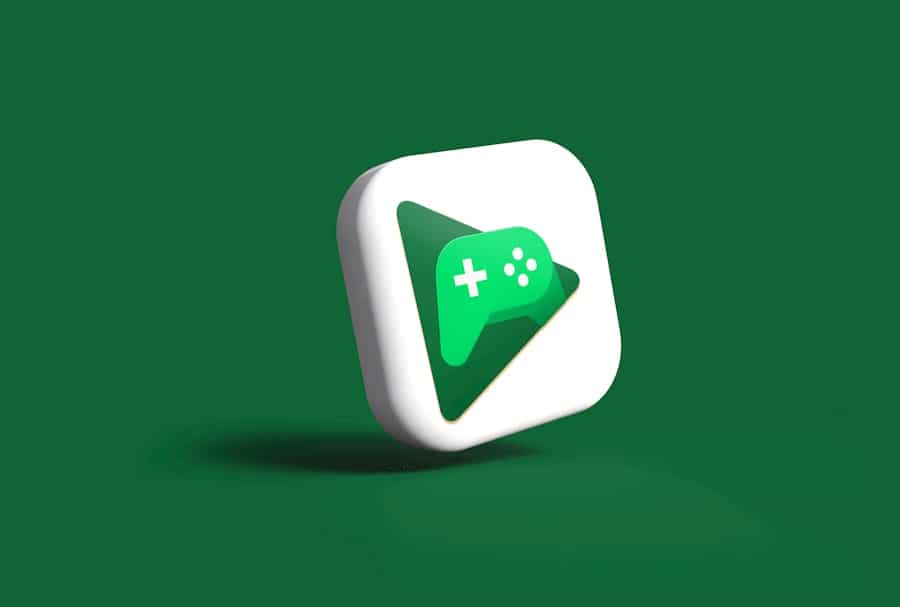In recent years, the gaming landscape has witnessed a significant transformation with the emergence of player-led game development platforms. These platforms, which allow gamers to create, share, and monetize their own content, have democratized the game development process. Historically, game development was a domain reserved for large studios with substantial resources and technical expertise.
However, the advent of user-friendly tools and accessible platforms has shifted this paradigm, enabling a broader range of individuals to participate in the creation of games. Platforms such as Roblox, Dreams, and Fortnite Creative have become household names, showcasing the potential of user-generated content and the power of community-driven creativity. The rise of these platforms can be attributed to several factors, including advancements in technology, the proliferation of online communities, and a growing desire among gamers to express their creativity.
With powerful game engines becoming more accessible and intuitive, even those without formal training in programming or design can create engaging experiences. This shift has not only empowered players but has also led to a surge in innovative game concepts that might not have emerged from traditional studios. As a result, player-led platforms are reshaping the gaming industry by fostering a culture of collaboration and experimentation.
Key Takeaways
- Player-led game development platforms are on the rise, allowing gamers to create and share their own content.
- These platforms empower gamers to unleash their creativity and design unique game experiences.
- Traditional game development studios are impacted by the rise of player-led platforms, as they face competition from user-generated content.
- Community and collaboration play a crucial role in player-led platforms, fostering a supportive environment for creators and players alike.
- Player-led platforms have the potential to offer new and innovative game experiences, pushing the boundaries of traditional gaming.
Empowering Gamers to Create Their Own Content
One of the most significant aspects of player-led game development platforms is their ability to empower gamers to create their own content. This empowerment manifests in various forms, from designing intricate levels and characters to scripting complex gameplay mechanics. For instance, Roblox provides users with a comprehensive suite of development tools that allow them to build entire games from scratch or modify existing ones.
This level of accessibility encourages creativity and experimentation, as players can iterate on their ideas without the constraints typically imposed by traditional game development processes. Moreover, the ability to create content fosters a sense of ownership among players. When gamers invest time and effort into developing their own games or experiences, they develop a personal connection to their creations.
This emotional investment often translates into a more engaged player base, as creators are likely to share their work with friends and communities. The success stories emerging from these platforms are numerous; for example, many developers on Roblox have transitioned from hobbyists to full-time game developers, earning substantial incomes through their creations. This phenomenon illustrates how player-led platforms can serve as incubators for talent and innovation within the gaming industry.
The Impact on Traditional Game Development Studios

The rise of player-led game development platforms has profound implications for traditional game development studios. As players increasingly turn to these platforms for unique gaming experiences, established studios face pressure to adapt their business models and creative processes. The success of user-generated content has highlighted a growing demand for personalized and diverse gaming experiences that may not align with the mainstream offerings of traditional studios.
Consequently, many developers are now exploring ways to incorporate user-generated content into their games or even collaborate with community creators. Additionally, the competitive landscape has shifted as player-led platforms attract both players and developers alike. Traditional studios must now contend with the fact that some of the most engaging and innovative games are being created by individuals or small teams outside the conventional industry framework.
This shift has prompted established studios to rethink their strategies, leading to increased investment in community engagement and support for modding tools. For example, games like Minecraft have thrived not only due to their core gameplay but also because they encourage modding and community-driven content creation. As traditional studios recognize the value of community involvement, they may find new avenues for growth and creativity.
The Role of Community and Collaboration in Player-Led Platforms
Community plays a pivotal role in the success of player-led game development platforms. These platforms thrive on collaboration, where players can share ideas, provide feedback, and work together on projects. The sense of belonging that emerges from these communities fosters an environment where creativity flourishes.
For instance, platforms like Dreams allow users to collaborate on projects in real-time, enabling them to combine their skills and ideas to create something greater than what they could achieve individually. Moreover, community-driven initiatives often lead to the establishment of mentorship programs and educational resources that help aspiring developers hone their skills. Experienced creators frequently share tutorials, tips, and best practices with newcomers, creating a culture of learning and support.
This collaborative spirit not only enhances the quality of content produced but also strengthens the bonds within the community. As players engage with one another, they build networks that can lead to future collaborations or even career opportunities within the gaming industry.
The Potential for New and Innovative Game Experiences
Player-led game development platforms have opened the door to a plethora of new and innovative game experiences that challenge conventional design paradigms.
For example, games like LittleBigPlanet have demonstrated how user-generated levels can introduce novel gameplay mechanics that deviate from traditional norms.
Players can create levels that incorporate physics-based puzzles or entirely new gameplay styles that may not be feasible within the constraints of a single studio’s vision. Furthermore, the potential for cross-genre experimentation is amplified on these platforms. Players can blend elements from different genres—such as combining role-playing mechanics with first-person shooters—to create hybrid experiences that defy categorization.
This freedom encourages innovation and allows creators to push boundaries in ways that traditional studios may hesitate to explore due to market considerations or risk aversion. As a result, player-led platforms are not only diversifying the types of games available but also inspiring traditional developers to think outside the box.
The Challenges and Limitations of Player-Led Game Development

Despite the many advantages offered by player-led game development platforms, there are also significant challenges and limitations that creators must navigate. One major concern is the issue of quality control; with an abundance of user-generated content available, it can be difficult for players to discern which games are worth their time. While some creators produce polished and engaging experiences, others may release unfinished or poorly designed games that detract from the overall quality of the platform.
This inconsistency can lead to frustration among players who may feel overwhelmed by the sheer volume of content available. Additionally, monetization remains a complex issue within player-led platforms. While many creators aspire to earn income from their work, navigating the financial landscape can be challenging.
Some platforms offer revenue-sharing models that allow creators to earn money based on player engagement or sales; however, these systems can be opaque and may not provide sufficient compensation for all creators. Furthermore, issues related to copyright infringement and intellectual property rights can arise when creators use assets or ideas from existing games without proper attribution or permission. These challenges highlight the need for clearer guidelines and support systems within player-led platforms to ensure fair treatment for all creators.
The Future Integration of Player-Led Platforms with Mainstream Gaming
As player-led game development continues to gain traction, it is likely that mainstream gaming will increasingly integrate elements from these platforms into their offerings. Traditional studios are beginning to recognize the value of user-generated content as a means of enhancing player engagement and extending the lifespan of their games. For instance, some AAA titles have started incorporating modding tools or level editors that allow players to create custom content within established franchises.
This trend not only enriches the gaming experience but also fosters a sense of community among players who share their creations. Moreover, collaborations between established studios and independent creators are becoming more common as both parties seek to leverage each other’s strengths. By partnering with talented individuals from player-led platforms, traditional studios can tap into fresh ideas and innovative gameplay mechanics that resonate with modern audiences.
This symbiotic relationship could lead to a new era in gaming where collaboration between professional developers and passionate hobbyists results in groundbreaking experiences that appeal to diverse player bases.
The Evolution of Game Distribution and Monetization on Player-Led Platforms
The evolution of game distribution and monetization on player-led platforms is another critical aspect shaping the future of gaming. Unlike traditional distribution models that rely heavily on physical copies or centralized digital storefronts, player-led platforms often utilize decentralized systems where creators can directly share their work with audiences worldwide.
Monetization strategies on these platforms are also evolving rapidly. Many creators are exploring various revenue streams beyond traditional sales models, such as in-game purchases or subscription services that provide exclusive content or features. For example, some platforms allow creators to offer premium versions of their games or charge for access to additional levels or assets.
This flexibility empowers creators to experiment with different monetization approaches while providing players with options tailored to their preferences. As these trends continue to develop, it is likely that we will see further innovations in how games are distributed and monetized within player-led ecosystems. The potential for new business models that prioritize creator autonomy while ensuring fair compensation could redefine industry standards and pave the way for a more inclusive gaming landscape where creativity thrives unencumbered by traditional constraints.
In the evolving landscape of game development, player-led platforms are becoming increasingly significant, offering gamers the tools to create and share their own content. This trend is not only reshaping the gaming industry but also influencing other creative fields. For instance, the music industry is experiencing a similar transformation with the rise of accessible music production software. An insightful article that delves into this topic is Best Music Production Software: A Comprehensive Guide. This piece explores how user-friendly software is empowering individuals to produce professional-quality music, paralleling the democratization of game development tools.
FAQs
What are player-led game development platforms?
Player-led game development platforms are online platforms that allow players to create and develop their own games within existing game environments. These platforms provide tools, resources, and support for players to design, build, and share their own games with others.
How do player-led game development platforms work?
Player-led game development platforms typically provide users with a set of tools and resources, such as game engines, scripting languages, and asset libraries, to create and customize their own games. Users can then publish and share their games with other players on the platform.
What are the benefits of player-led game development platforms?
Player-led game development platforms empower players to express their creativity, learn valuable skills such as coding and game design, and share their creations with a wider audience. These platforms also foster a sense of community and collaboration among players who are passionate about game development.
What is the future of player-led game development platforms?
The future of player-led game development platforms is likely to involve continued innovation in tools and resources for game creation, as well as increased integration with existing game ecosystems. These platforms may also play a role in shaping the future of game development by providing a pathway for aspiring game developers to gain experience and recognition.

